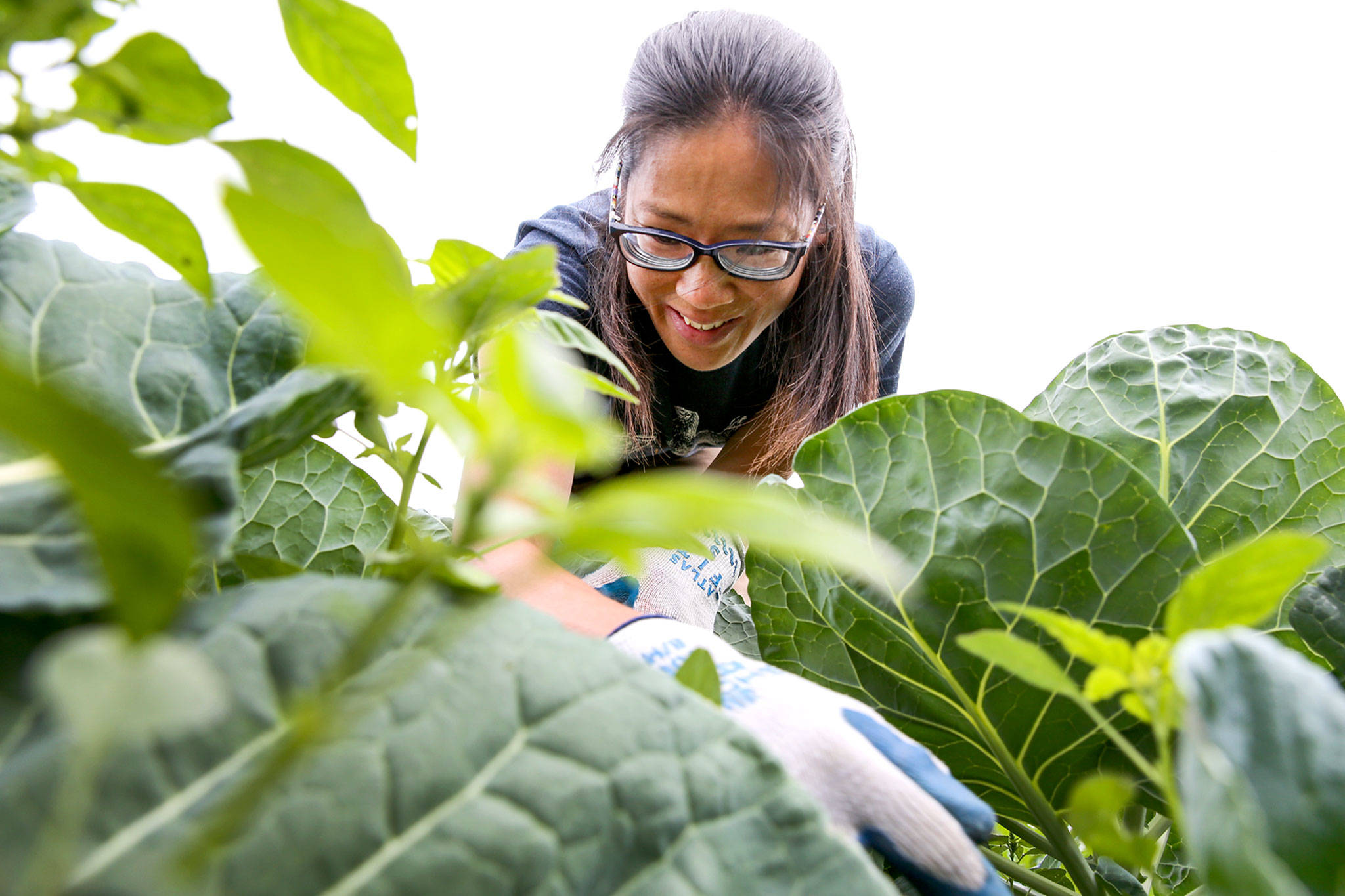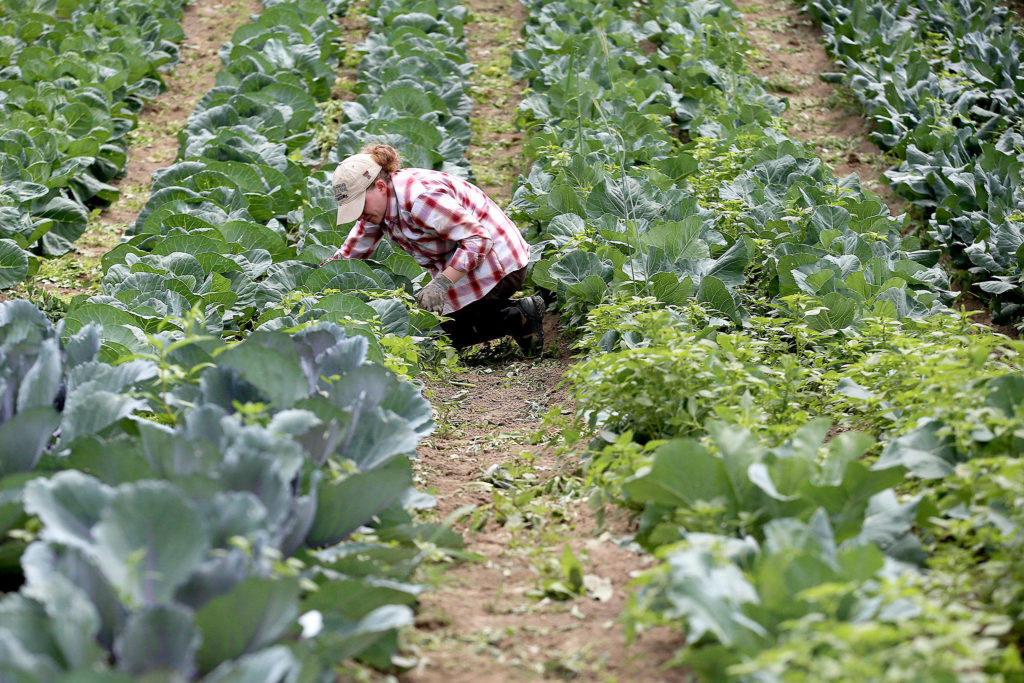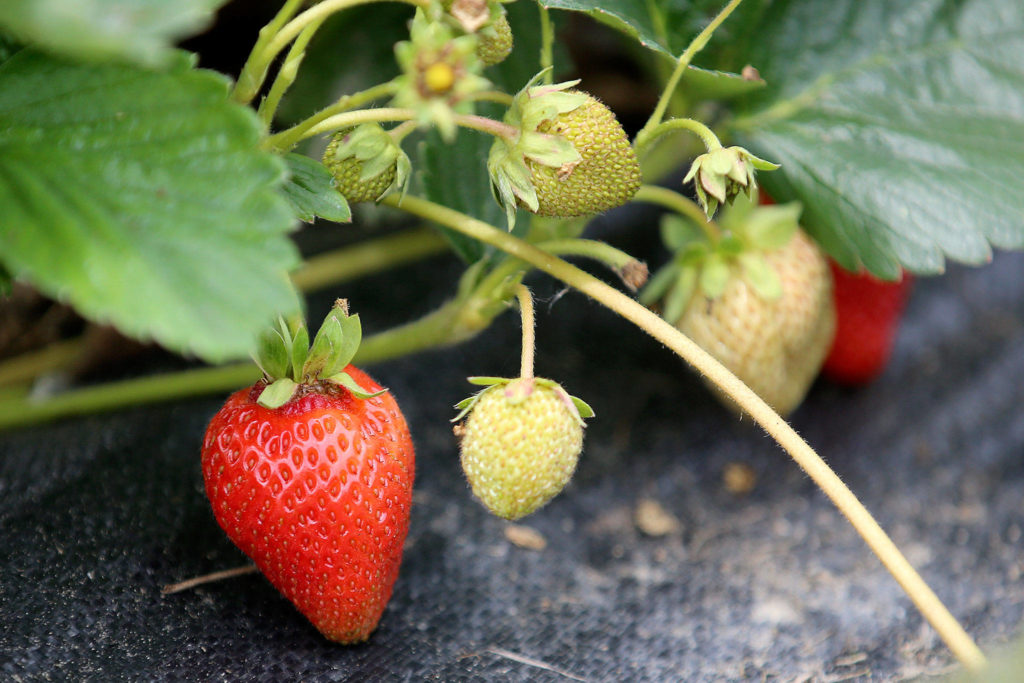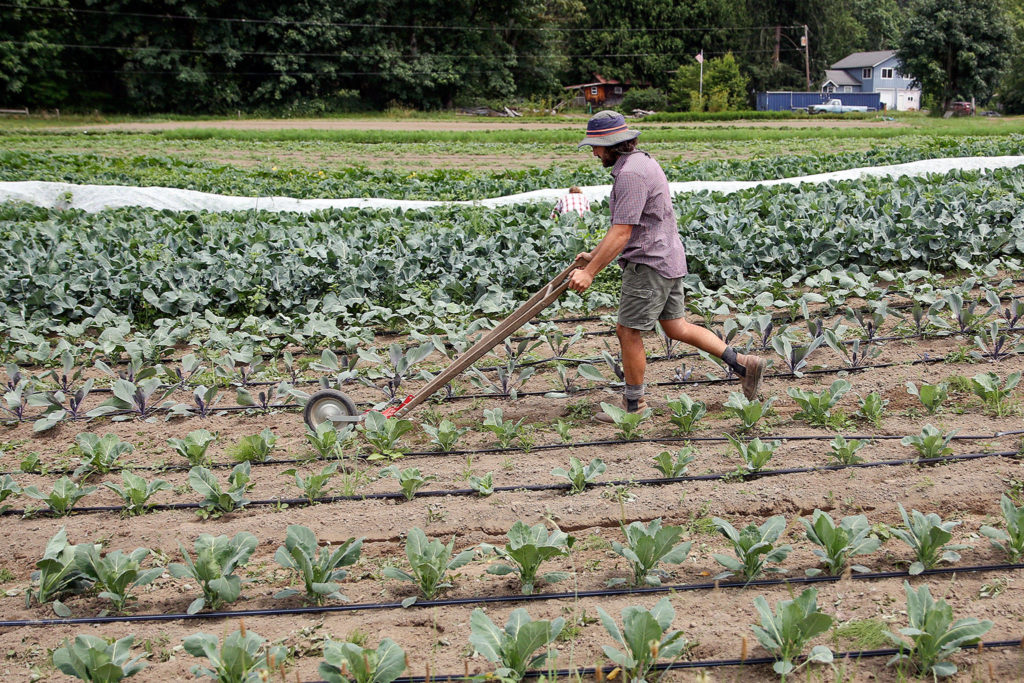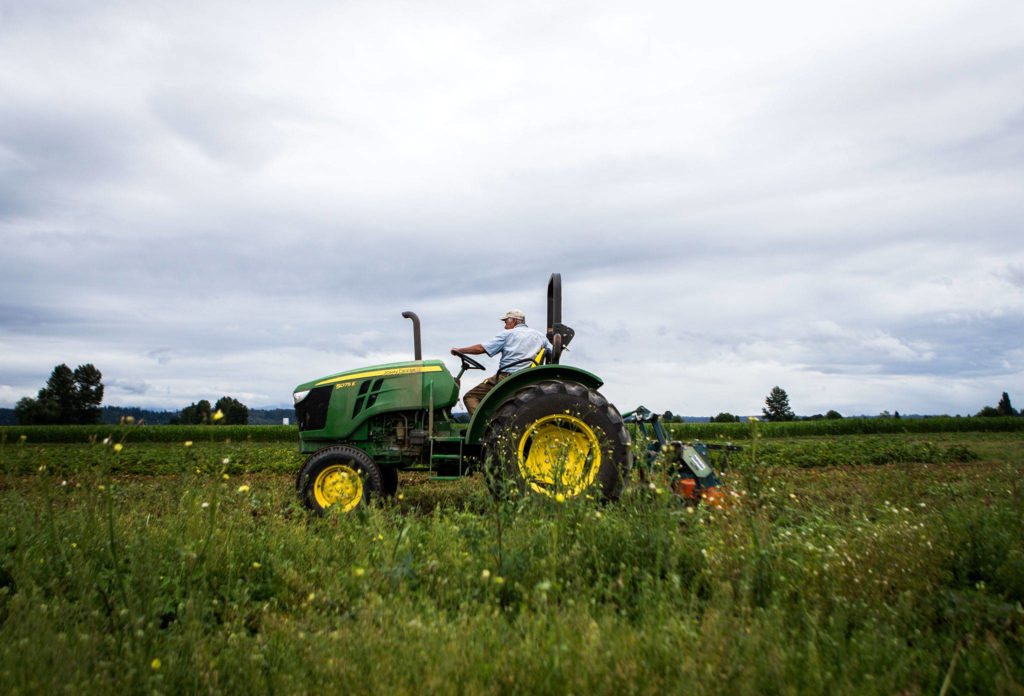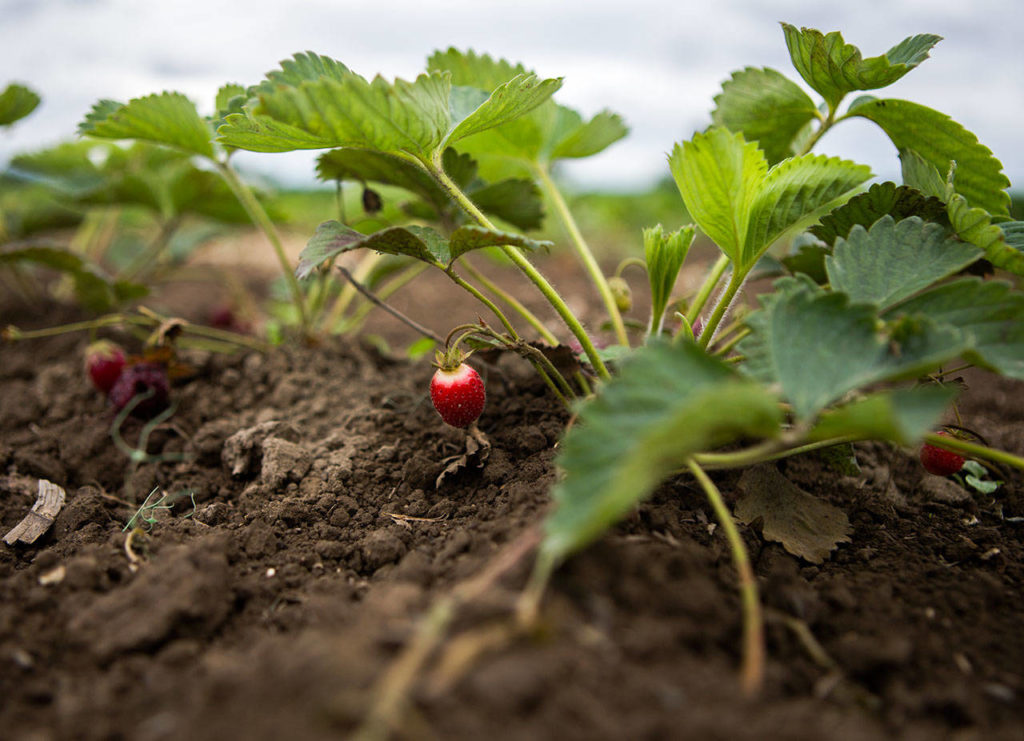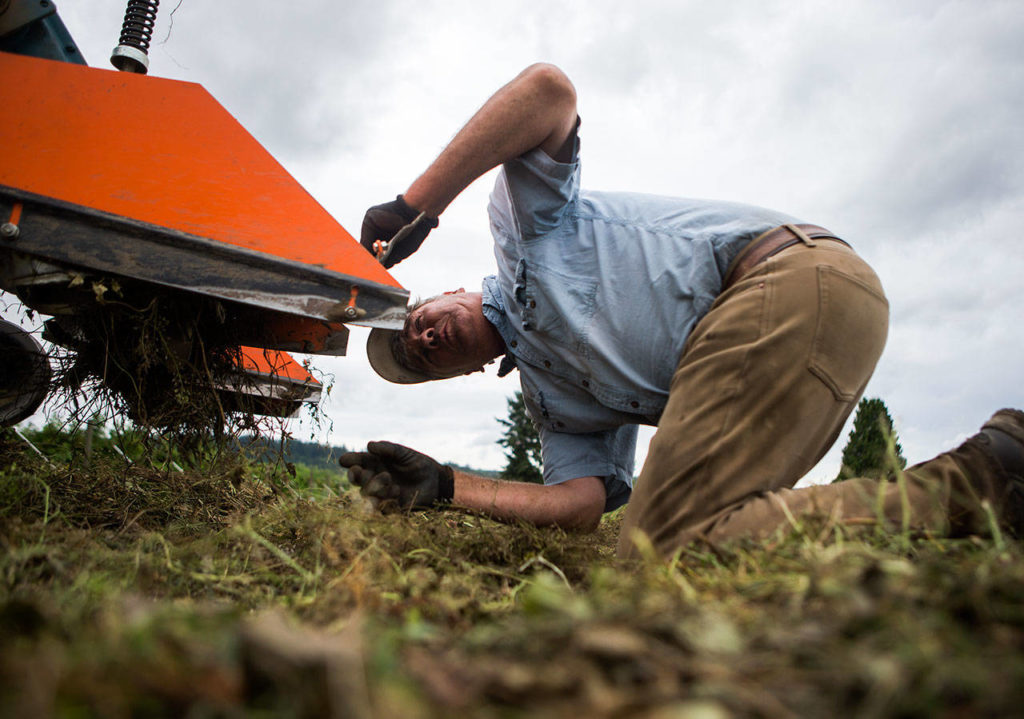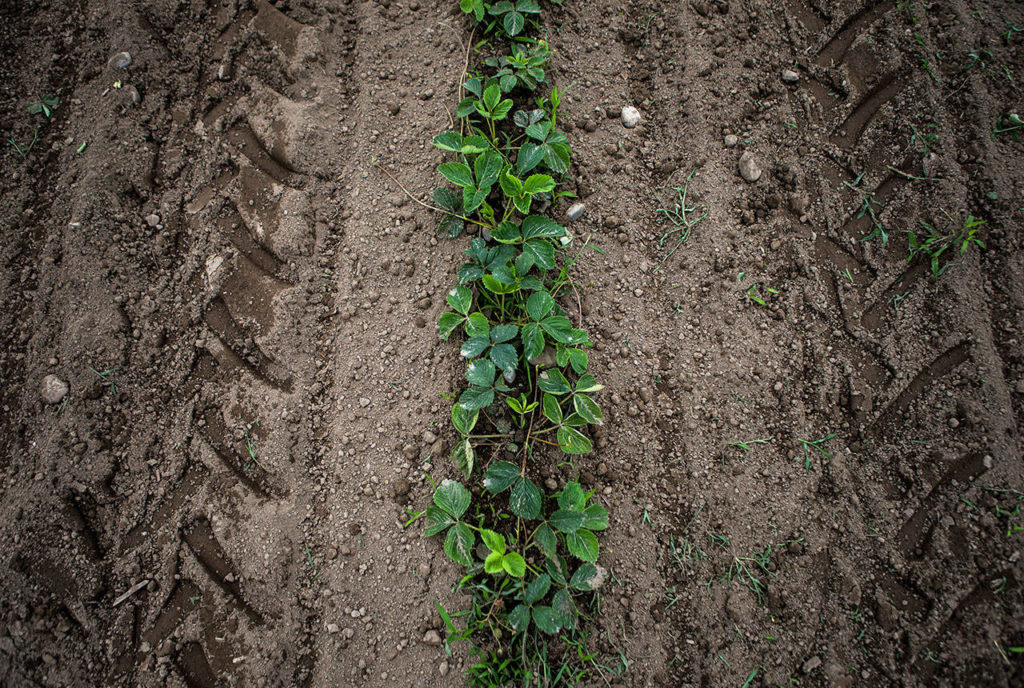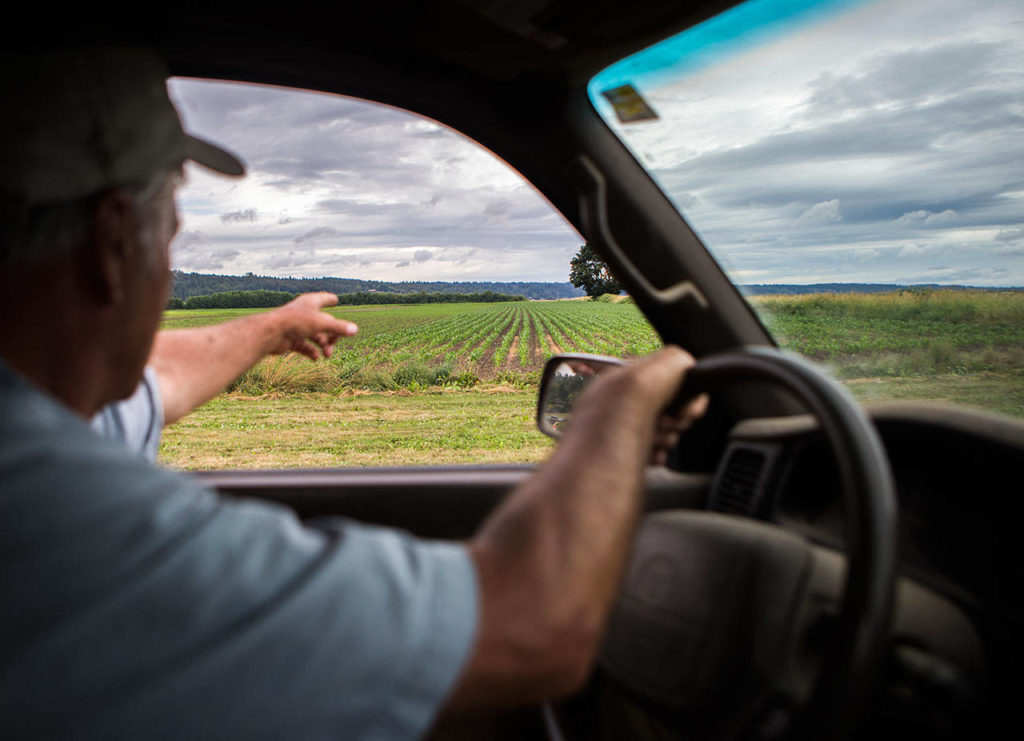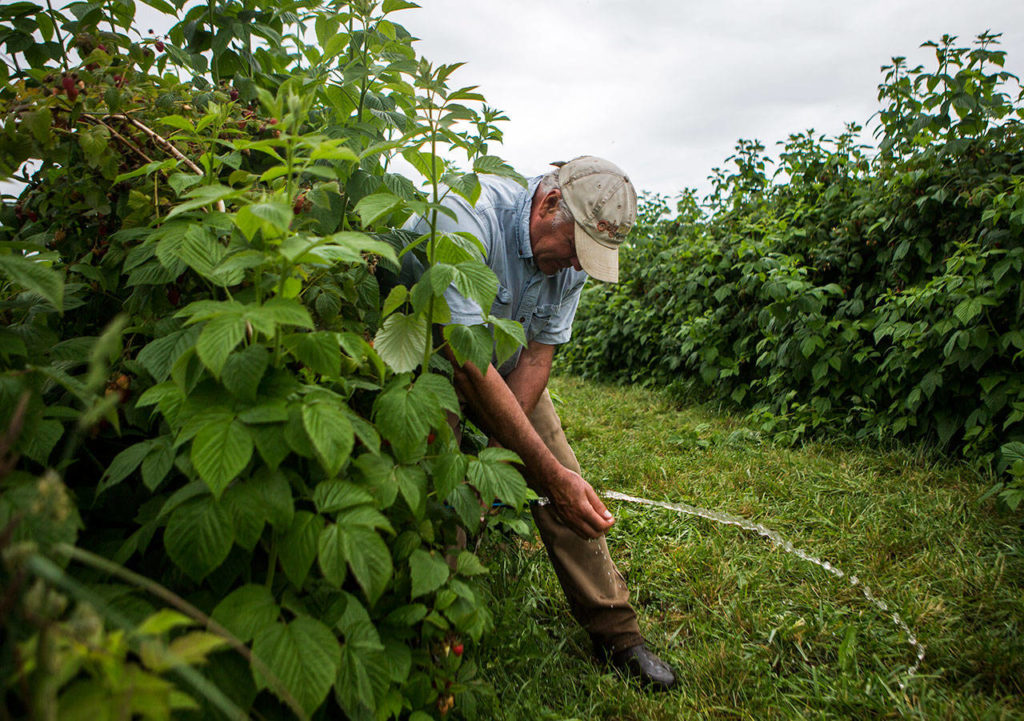SNOHOMISH — In less than an hour, Petrina Fisher can walk all four acres of her Snohomish farm, scanning rows of cabbage, fennel and specialty orange cauliflower for any pesky issues.
Skylight Farms’ small scale makes it easier to use sustainable practices, Fisher said.
“When you’re working on a small scale you don’t need to take industrial steps like using lots of chemicals,” she said. “It’s more artisanal.”
The future of growing food in the United States is not looking good. Many farms are struggling to make ends meet as prices rise, the population of farmers continues to age and farmland gives way to development.
Snohomish County is not immune to the pressure piling up against farms everywhere. But counter to state and national trends, at least one segment of the Snohomish County farm community appears to be thriving.
From 2012 to 2017, the number of farms in the county actually grew, fueled mostly by a surge in the number of small farms, those coming in at 10 acres or less, according to recently released data from the U.S. Census of Agriculture.
The number of farms in Snohomish County rose from 1,438 to 1,558, of which 99 were under 10 acres. Meanwhile, farmers grew more acres of harvested crops.
“This is really good,” county agriculture coordinator Linda Neunzig said. “We’re doing things right in Snohomish County.”
Bucking a trend
Selling at the Bellevue Farmer’s Market, Fisher has found there’s a large demand for the types of niche produce she grows.
“There’s just a lot of people out there who really care about sustainable food production, a small carbon footprint and keeping things close to home,” she said.
Now in their sixth season, Fisher and her husband are joined by a wave of small Snohomish farmers meeting that demand.
For the purposes of the census, the USDA has a pretty low bar for what qualifies as a farm. Any property that produces, or has the capability of producing, $1,000 worth of agricultural products a year counts. That means the study can capture backyard operations and avid gardeners.
So what’s fueling the surge in these tiny tracts?
Neunzig, the county’s agriculture coordinator, said the increase in small operations is partially due to the county’s lack of large, undeveloped swaths of land capable of housing big farms.
“We just don’t have the contiguous acreage,” she said.
It’s also the type of farming that’s being practiced.
There’s more niche farming, like growing flowers or veggies for farmer’s markets, Neunzig said. Those operations, like Skylight Farms, don’t need 400 acres to be successful. With Snohomish County’s proximity to Seattle, there’s a strong market for these local goods.
Fisher’s noticed new farms popping up every season, but said there’s no sense of competition. And, even with the rising number, she doesn’t think the demand for sustainable, farm-to-market food is oversaturated.
While any increase in farms is good news for the agriculture industry, challenges remain.
Mid-size family farms are going away as remaining farmland is either converted into small farms or consolidated into larger operations.
Here, Snohomish County reflects the national trend.
“The face of Snohomish agriculture is changing,” said Robin Fay, conservation manager at PCC Farmland Trust.
“If you were just left with those smallest farms producing really diverse crops, that might not be enough of a critical mass for ag to survive in Snohomish County overall. There’s a lot of infrastructures supported by those larger farms.”
That includes feed stores, farm equipment dealers and research organizations that provide services to the bigger operations.
The jump in the number of small farms led to a decline in the size of the average Snohomish County farm from 49 to 41 acres. The county now ranks 34th out of 39 counties for average farm size.
Neunzig said she sees it as a sign that agriculture’s legacy as a dominant business in Snohomish County will continue.
“It really goes to show we’re a thriving industry,” she said.
Less land, but more crops
Perplexingly, while the number of small farms in Snohomish is soaring, the actual number of farmland acres appears to be decreasing.
The latest census shows 7,000 fewer acres than in 2012, with farmland now accounting for about 63,671 of Snohomish County’s 1.4 million acres.
That loss came from harvested woodland acres — which decreased from 17,o98 to 10,644 — and not land where food is being grown, Neunzig said.
But those numbers might be off, said Chris Mertz, a USDA official who manages and interprets the agriculture census data for the Pacific Northwest.
The 2017 reported woodland acreage isn’t that far off the number listed for 2007 and previous years, making 2012 an outlier, he said.
“If we really wanna tell a story, one could consider someone reported some extra woodland acres in 2012,” he said. “That’s my personal thinking.”
Even though the number of farm acres decreased, the number of harvested crop acres, land purposely planted and gleaned, increased by 3,150 acres.
“I’m glad to see we’re holding our own,” Neunzig said. “We’re not losing ground.”
Again, she attributes that success to a number of efforts, including county policies on development rights and acceptable uses of agriculturally zoned land.
In 2013, the county adopted a policy allowing farmers to sell the development rights for their land — a move which provides the landowner with an influx of cash and ensures no development can take place on that property.
“As a farmer, you get a short-term financial gain but retain ownership and you can still farm (the land),” Nick Bratton, policy director with the regional sustainability organization Forterra, said. “The only thing you’re giving up is the ability to build homes on your land in the future.”
On a 500-acre swath between Highway 9 and the Snohomish River in early July, strawberries shone like ruby jewels on an uncharacteristically rainy summer day.
Don Bailey drove a tractor between rows of the berry plants, dragging a tiller behind. After a few passes, he grabbed a pair of gloves off the seat and jumped down to the dirt. Shepherd’s Purse, a viney weed, had gotten tangled in the teeth of his tiller.
“This is the worst part of it all,” Bailey said as he picked the equipment clean. He repeated the process every few rows.
It’s tedious, but it only took a year of working at a bank post-college for the family business of farming to look pretty good to Bailey.
His great grandfather bought the land in 1913.
The production grew over the years, starting as a dairy farm before moving to vegetables and their current U-pick and corn silage operations. The Baileys now own about 300 acres.
Don Bailey and his brother, Dan Bailey, both have been farming the land for about 40 years.
In 2015, Don Bailey’s father, Cliff Bailey, decided, despite growing development pressure, that he wanted to ensure the land remained in farming.
He entered the property into PCC Farmland Trust’s purchase of development rights program.
“We thought, ‘It’s been a farm, and it’s in the floodplain anyway, so it should stay a farm,’” Don Bailey said.
The cash Cliff Bailey got for the development rights became retirement funds for himself and his two sons.
“Instead of being forced to sell the farm so you can retire, (the program) gives you some money that you can retire on and keep the farm going,” Don Bailey said.
His daughters, who are in their 30s, are also gearing up to get into the family business.
“(The program) lowers the value of the land,” Bailey said. “But if you’re committed to farming, it’s a good thing.”
The funds from development rights can be used for anything from buying more land to constructing a farm stand or processing building. And with the value of development potential stripped away, these programs make buying farmland accessible for new farmers trying to get started in the industry.
Forterra helps with the transfer of development rights from farms to areas better able to handle growth and greater density. Using the program, a developer could increase the number of units allowed in a multi-family housing project.
Bratton said Forterra has conserved 135 acres of Snohomish County farmland so far, and he expects that number to double in the next few months as more deals are finalized.
PCC Farmland Trust neutralizes the development rights taken from farmland instead of selling them to developers, meaning development rights cease to exist.
Fay said the trust has conserved 440 acres so far, and has secured funding for another 835.
Neunzig said the county’s lenient policies on agriculture use, which allows farms to supplement their income with agritourism like a pumpkin patch or farm store, also play a role in keeping farms afloat.
“We want to make sure our farmers can make money on their land,” she said.
And some of them are. Snohomish County’s commodity sales increased by $18 million from 2012 to 2017, Neunzig said, and totalled $157.6 million in 2017.
But that success doesn’t mean local agriculture is financially secure.
“With all the growth coming our way, it’s going to take considerable effort to make sure it’s still viable in another few decades,” Fay said.
Julia-Grace Sanders: 425-339-3439; jgsanders@heraldnet.com.
Changes down on the farm
The face of Snohomish agriculture is changing in more ways than one. What is grown, who’s growing it and how are all evolving. In a series of stories, we’ll be diving into the newly released USDA Census of Agriculture to show you how our county grows food.
Talk to us
> Give us your news tips.
> Send us a letter to the editor.
> More Herald contact information.
